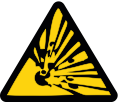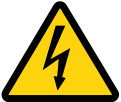ISTRUZIONI E PRECAUZIONI
Tutti i diritti sono riservati - ©2000-2025
(Ita)
Il costruttore assicura che questo prodotto è idoneo all’uso a cui viene destinato ed è esente da difetti di materiali e di fabbricazione: vale la direttiva 99/44/CE nei paesi che l’hanno recepita. Per I restanti paesi vale la legge locale. Le prestazioni della batteria sono, salvo specifiche indicazioni contrarie, conformi ai requisiti della norma EN 50342.
ISTRUZIONI GENERALI
Verificare integrità e pulizia dei cavi di collegamento, morsetti e terminali, al fine di evitare difficoltà all’avviamento e scintille con possibili esplosioni. Un cortocircuito tra i due terminali o tra il terminale positivo (+) della batteria e qualsiasi parte metallica della vettura può causare esplosioni / incendi. Fare attenzione al rispetto della polarità dei terminali sia nell’installazione della batteria che di accessori. Pulire la batteria unicamente con panni umidi; evitare l’impiego di panni asciutti. La batteria essere rigidamente fissata al veicolo one evitare oscillazioni con possibile fuoriuscita di elettrolita.
ISTRUZIONI PER LA MESSA IN SERVIZIO E MANUTENZIONE DELLA BATTERIA CARICA CON ACIDO
In condizioni normali d’uso non sono richiesti rabbocchi, in casi particolari quali chilometraggi o temperatura di esercizio elevati può essere necessario effettuare il rabbocco, usare solo acqua demineralizzata non aggiungere mai acido solforico.
• In caso di frequenti rabbocchi o scarica ingiustificata si consiglia di far controllare l’impianto elettrico del veicolo.
• La tensione a circuito aperto, a veicolo fermo e senza carichi applicati deve risultare > di 12,4 V. in caso contrario caricare la batteria come descritto al punto c), come pure se la batteria rimane a magazzino per 4-6 mesi, oppure il mezzo sia inattivo per lunghi periodi.
• Per effettuare la carica di rinfresco si applichi una corrente costante pari a 1/10 della capacità nominale per 5-6 ore. Ridurre il tempo di carica se la corrente fosse maggiore, max. 20 A per batterie auto e max. 40 A per batterie camion: è importante evitare che la temperatura superi i 55° C riducendo la corrente o interrompendo la carica.
BATTERIA AUTO CON “CHECK CONTROL”
Per verificare lo stato di carica alcuni tipi di batterie dispongono sul coperchio di un sistema di controllo (“check control”). Lo stato di carica è indicato dal colore del “check control” : verde batteria OK, nero batteria da ricaricare/livello elettrolita basso/verifica impianto elettrico e sistema di carica, in tutti i casi, far controllare il veicolo e la batteria da personale qualificato.
(Ing)
The manufacturer guarantees that this product is suitable for the use for which it is intended and is free from defects in materials and workmanship: Directive 99/44/EC applies in the countries that have implemented it. For other countries, local law applies. The battery performance is, unless otherwise specifically indicated, compliant with the requirements of standard EN 50342.
GENERAL INSTRUCTIONS
Check the integrity and cleanliness of the connection cables, clamps and terminals, in order to avoid difficulty in starting and sparks with possible explosions. A short circuit between the two terminals or between the positive (+) terminal of the battery and any metal part of the vehicle can cause explosions / fires. Pay attention to the polarity of the terminals both when installing the battery and accessories. Clean the battery only with damp cloths; avoid using dry cloths. The battery must be rigidly fixed to the vehicle and avoid oscillations with possible leakage of electrolyte.
INSTRUCTIONS FOR COMMISSIONING AND MAINTENANCE OF THE ACID-CHARGED BATTERY
Under normal conditions of use, top-ups are not required, in particular cases such as high mileage or operating temperature it may be necessary to top up, use only demineralized water, never add sulfuric acid.
• In case of frequent top-ups or unjustified discharge, it is advisable to have the vehicle's electrical system checked.
• The open circuit voltage, with the vehicle stationary and without any applied loads, must be > 12.4 V. Otherwise, charge the battery as described in point c), as well as if the battery is stored for 4-6 months, or the vehicle is inactive for long periods.
• To perform the refresh charge, apply a constant current equal to 1/10 of the nominal capacity for 5-6 hours. Reduce the charging time if the current is higher, max. 20 A for car batteries and max. 40 A for truck batteries: it is important to avoid the temperature exceeding 55° C by reducing the current or interrupting the charge.
CAR BATTERY WITH “CHECK CONTROL”
To check the charge status, some types of batteries have a control system (“check control”) on the cover. The charge status is indicated by the color of the “check control”: green battery OK, black battery to be recharged/low electrolyte level/check electrical system and charging system. In all cases, have the vehicle and the battery checked by qualified personnel.
PERICOLO ACIDO CORROSIVO / CORROSIVE
PROTEGGERE GLI OCHHI / PROTECT YOUR EYES
PERICOLO DI ESPLOSIONE / EXPLOSION HAZARD
NON FUMARE, EVITARE FIAMME LIBERE O SCINTILLE / DO NOT SMOKE, AVOID OPEN FLAMES OR SPARKS
TENERE LONTANO DALLA PORTATA DEI BAMBINI / KEEP OUT OF REACH OF CHILDREN
NON GETTARE MAI NEI CASSONETTI DEI RIFIUTI URBANI / NEVER THROW INTO URBAN WASTE BINS
CONSEGANRE LE BATTERIE FUORI USO IN UN CENTRO DI RACCOLTA / DELIVER YOUR USELESS BATTERIES TO A COLLECTION CENTRE
ATTENZIONE PERICOLO / ATTENTION DANGER
ATTENZIONE SCARICHE ELETTRICHE / WARNING ELECTRIC SHOCK



INFORMAZIONI E PRECAUZIONI
/ INFORMATION AND PRECAUTIONS






